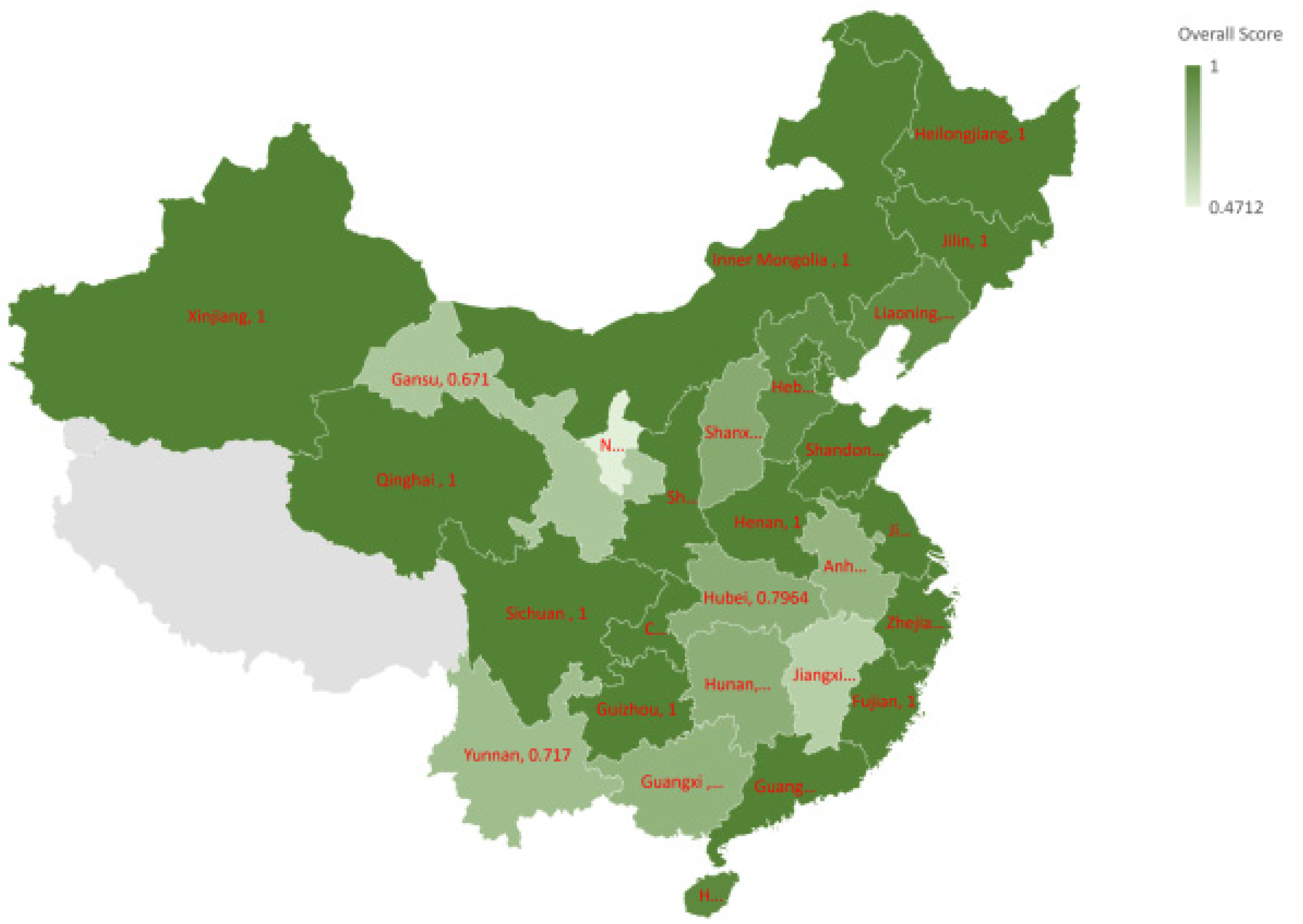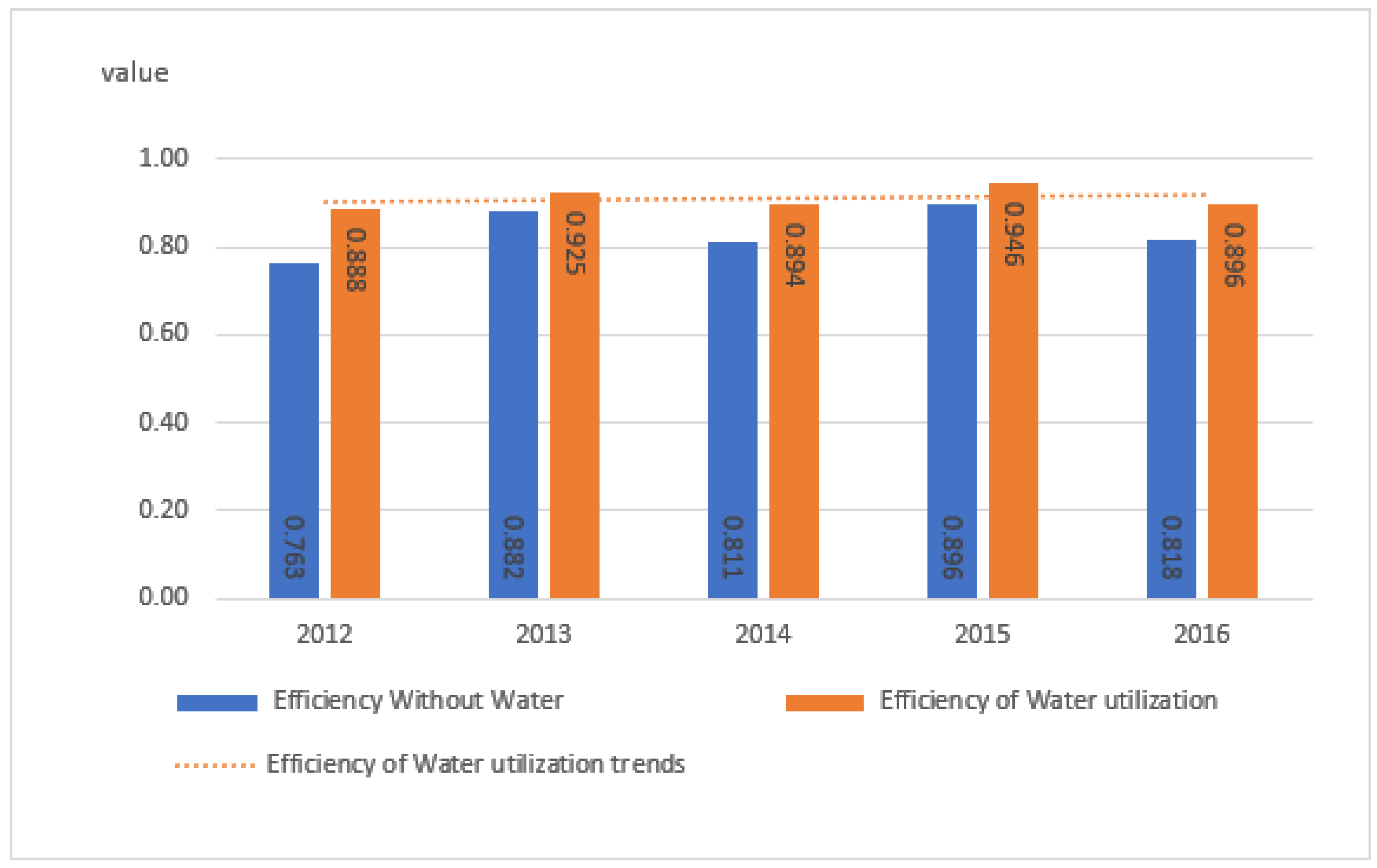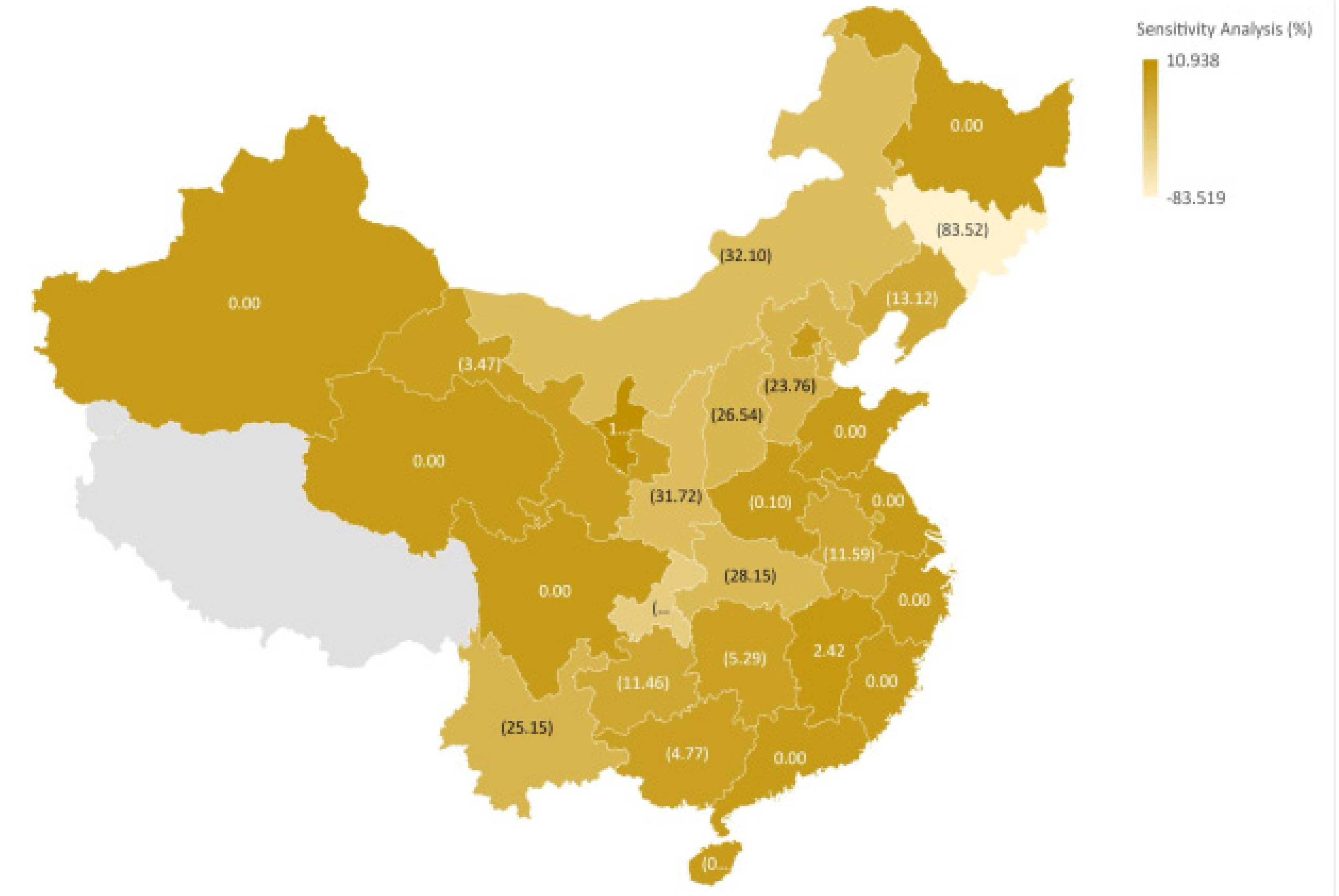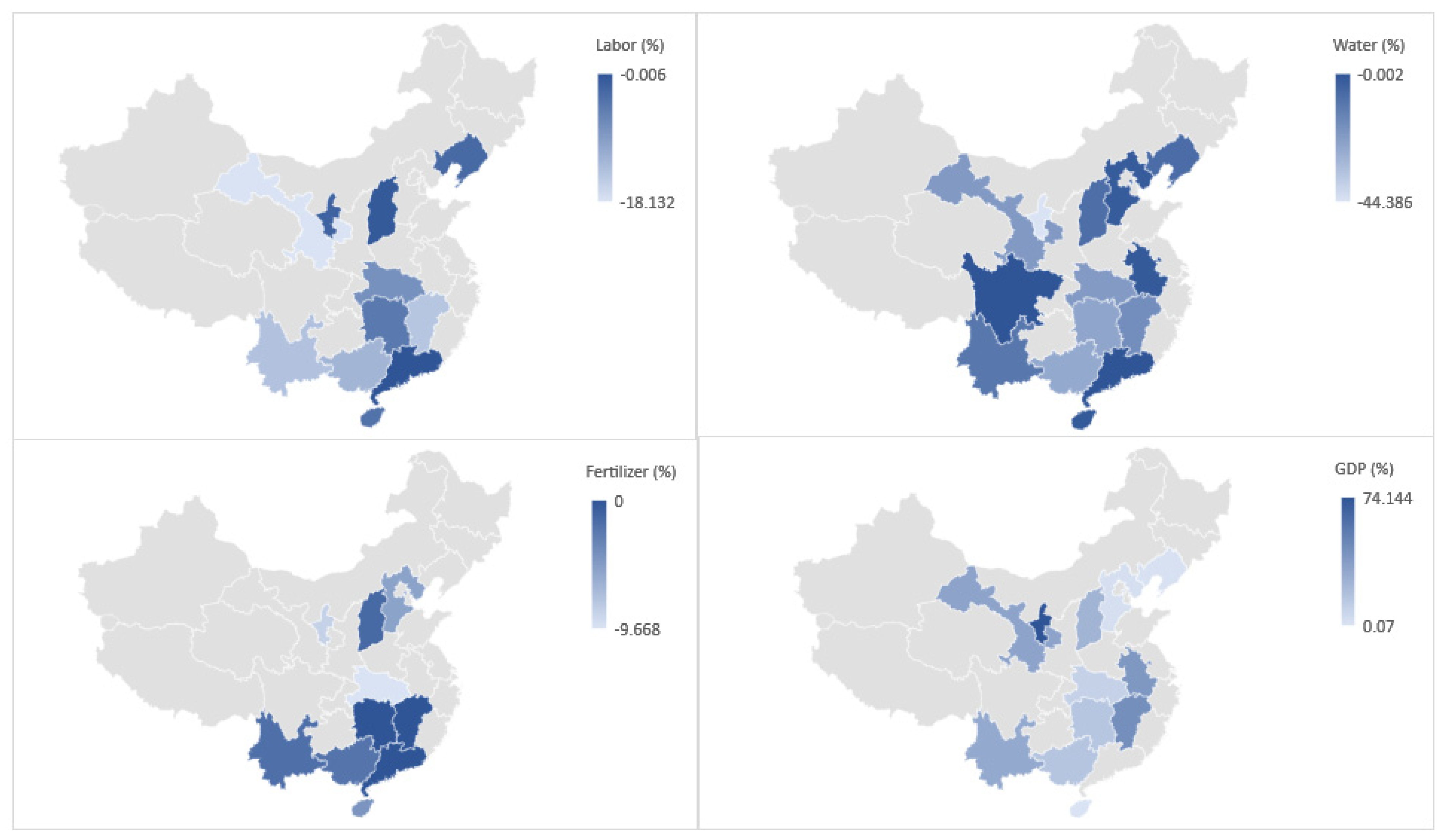1. Introduction
FAO (Food and Agriculture Organization of the United Nations) released the global overview report on agricultural water resources (FAO, 2020/11/26) [
1], which pointed out that agricultural water accounts for more than 70%.
Figure 1 shows the global distribution of water use from 1961 to 2014, in which irrigation water use has increased year by year, ranking first among all types of water use.
Due to climate change, abnormal high temperatures around the world have led to dwindling freshwater resources. Under the current shortage of water resources, agricultural development will be seriously threatened (Porkka et al., 2016, Rosa et al., 2020) [
2,
3] and this will indirectly affect human food security (Foley et al., 2011) [
4].
China is the world’s second largest economy and a major agricultural country. According to the 2020 National Economic and Social Development Statistical Bulletin of the National Bureau of Statistics of the People’s Republic of China, the annual grain planting area in 2020 was 116.77 million hectares, an increase of 700,000 hectares over the previous year [
5]. The annual grain output was 669.49 million tons, an increase of 5.65 million tons or 0.9% over the previous year. He et al. (2019) [
6] pointed out that based on the current eating habits of Chinese people, more arable land and irrigation water are needed to help obtain food.
Zongxing et al. (2016) and Sun et al. (2018) [
7,
8] found that China’s rivers are gradually disappearing under climate change, and Li et al. (2016) and Wang et al. (2019) [
9,
10] also pointed out that the surviving rivers are also polluted due to economic development. Wang, Y. (2019) and Li et al. (2020) [
10,
11] also stated that due to China’s industry, urbanization, and population expansion, the area of cultivated land is also gradually decreasing.
Agricultural development is the foundation of national livelihood and economy. As a major food producer, China still faces food shortages. In relation to the 2030 Sustainable Development Goals (Sustainable Development Goals, SDGs) announced by the United Nations in 2015, the second goal is to eliminate hunger and create sustainable food. Additionally, the sixth core goal is providing sanitation and sustainable management of water resources for all. Under extreme climates and limited arable land, how to manage water use to achieve sustainable agricultural development has attracted much attention.
The paper is structured as follows:
Section 2 presents the literature review,
Section 3 discusses the research methodology,
Section 4 presents the empirical analysis, and
Section 5 provides conclusions and recommendations. This dossier includes a number of acronyms, which are summarized in
Table 1.
2. Literature Review
Cao et al. (2018) and Geng et al. (2019) [
12,
13] pointed out that improving water efficiency can increase agricultural productivity and is an effective way to solve food shortages. Regarding the measurement of water use efficiency, traditional evaluation methods only consider the relationship between single water use and output GDP. This study believes that to explore the efficiency of agriculture, other variables may need to be evaluated at the same time, which are more objective.
Data envelopment analysis (DEA) is a comprehensive efficiency index that can measure multiple inputs and outputs at the same time, and its results are easy to show performance, so it is accepted by ordinary people.
For example, Bai et al. (2017) [
14] applied DEA, input labor, fixed asset investment, water consumption, output GDP, and chemical oxygen demand (COD) to evaluate the water resources, environment, and economic efficiency of the Bohai Bay urban agglomeration in China, and the empirical results show that the efficiency of water resource utilization in the Bohai Bay area has improved, but pollution poses a serious threat to the rapid growth of available water resource protection, and solving the pollution problem is the key to preventing environmental degradation. Hu et al. (2018) [
15] applied DEA, input domestic water consumption, industrial and agricultural water consumption, fixed assets, labor force, and GDP of output area, and evaluated the ecological efficiency of China’s water use in 2014. The empirical results show that the overall water environment is poor, and China needs to focus on reducing industrial waste water; there is a lot of room for improvement in water consumption. Yan (2019) [
16] evaluated the water use efficiency of 11 cities in Shanxi in 2016. These studies on water use efficiency belong to single-period static analysis.
Since static analysis does not have a vertical link to measure the impact on the next period of efficiency, it is easy to overestimate the efficiency. So, to measure the performance of water efficiency over a period of time, scholars use dynamic analysis for evaluation, such as Sun et al. (2014) [
17] who applied the SBM model to explore the influence of external adverse factors on water efficiency; the empirical evidence shows that there is a significant spatial correlation between the output of considering and not considering the adverse factors. Deng et al. (2016) [
18] applied the SBM model to explore the influence of external adverse factors on water efficiency; the empirical results show that economically developed administrative regions have higher water efficiency, but lower sewage treatment efficiency. Luo et al. (2018) [
19] applied the SBM model, inputting industrial, agricultural, and domestic water consumption and outputting wastewater discharge, and evaluated water use efficiency in 12 provinces and cities in western China; the empirical results show that technological progress has had a positive impact on water use efficiency. Ren et al. (2016) [
20] inputted water resource consumption, arable land area, output grain output, livestock quantity, service industry gross production value, and existing research from 2003 to 2013 in Gansu Province (China Urban Water Efficiency).
Another study on the efficiency of water in agriculture, such as the work of Xue and Zhou (2018) [
21], applied the SBM model to evaluate the water use efficiency of rice production in China from 2004 to 2014 by inputting fertilizer, water consumption, labor force, planting area, and capital, and using the output as the output. The results showed that the water use efficiency of rice in many regions did not reach the production frontier due to pollution emissions, but the water use efficiency of rice in all regions gradually improved.
Wang et al. (2019) [
22] evaluated the efficiency of agricultural water use in China from 2000 to 2015 based on investment capital, labor force, water consumption, net value of agricultural fixed assets, and agricultural output value added. The results showed that the efficiency of agricultural water use in various regions has gradually increased, and with regard to rural residents, the proportion of household per capita disposable income with a high school degree or above is a factor that affects agricultural water use efficiency.
Shi et al. (2020) [
23] applied the SBM model, input agricultural water consumption, agricultural employees, arable land area, fixed assets, output agricultural output value, and crop disaster areas, and evaluated the impact of climate change on agricultural production in 30 provinces of China from 2010 to 2017. The results show that China’s agricultural production efficiency is unevenly distributed. The central and eastern regions have the best agricultural production efficiency, while the western regions have low agricultural production efficiency. The distribution difference in agricultural water resources across the country has gradually decreased, but due to extreme weather, agricultural water supply and water-saving measures should be controlled.
Because water use is very important to agricultural production, there are few studies on water use as an exogenous variable of agricultural production. This study observes that the rate of change in China’s agricultural arable land area has been very small in recent years. From the perspective of solving the food problem and sustainable agricultural development, it is not easy to increase the arable land area to increase the production capacity. After summarizing the above-mentioned literature, when discussing the issue of water use efficiency in agriculture, the less-used agricultural land area and variables such as chemical fertilizers are analyzed together.
Based on the discussion of the impact of water use on China’s agriculture, this study took 30 regions in China as the research objects, applied the dynamic SBM model, selected the agricultural labor force and agricultural chemical fertilizers as the inputs, and took agricultural gross domestic product as the single output, using agricultural water use as an external factor and agricultural land area as an immutable intertemporal variable, to measure the impact of China’s water use on agricultural efficiency from 2012 to 2016. In the future, through the empirical results, this work can provide references for relevant government departments in formulating policies to achieve sustainable agricultural development.














